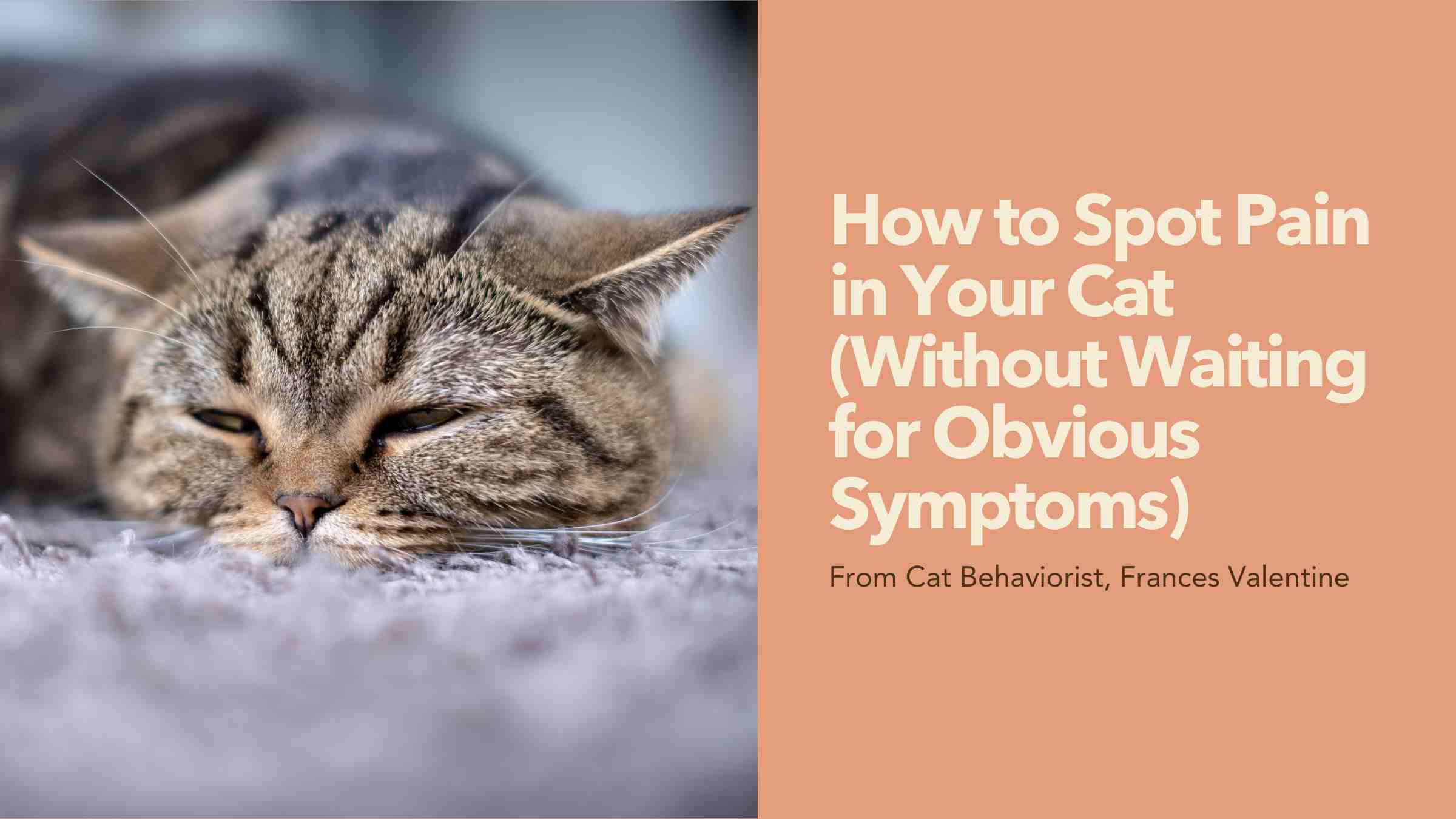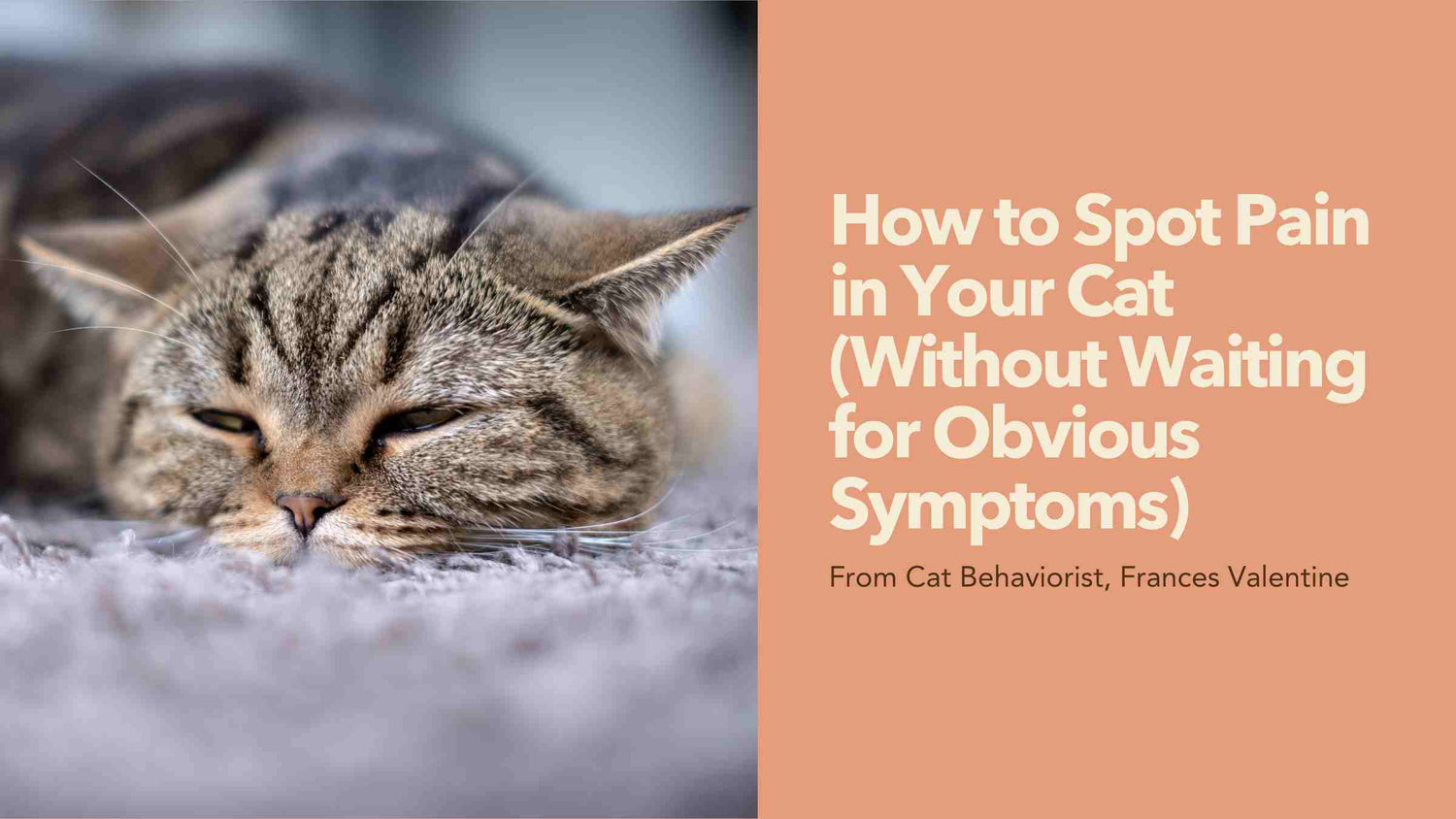Cats don’t cry when they’re in pain.
They don’t limp, whine, or ask for help.
They hide.
They flatten their ears.
They stop jumping on the bed.
They just seem… off.
In this episode of The SoyKitty Video Interview Series, SoyKitty founder Ashley Hejlik sits down with Frances Valentine, Lead Behaviorist at sylvester.ai, to uncover what most cat parents miss when it comes to feline pain and how artificial intelligence is giving cats a voice before it’s too late.
Whether you’re navigating a mysterious behavior shift or simply want to feel more confident supporting your cat’s wellbeing, this conversation is packed with incredible insights about how cats communicate discomfort and how you can finally start listening.
Watch the Full Episode
Key Learnings
#1: Cats Hide Pain by Design. It’s a Survival Strategy
Frances reminds us that cats evolved to be both predator and prey. That means showing pain isn’t just uncomfortable, it’s dangerous.
“Cats hide pain because that’s what keeps them alive in the wild. If they look vulnerable, they’re at risk. So instead of limping or crying, they stop doing something they used to love. That’s often the only clue.”
The most common signs of pain?
- Stopped jumping on favorite surfaces
- Change in grooming habits
- Flattened ears or tense facial expression
- Hiding more often than usual
- Withdrawing from human interaction
Sylvester AI’s pain detection tool is designed to catch those micro-signals using a single photo, so you don’t miss the window for early care.
#2: “Bad” Behavior Is Usually a Message
From litter box avoidance to sudden aggression, Frances urges cat guardians to pause before punishing and ask a deeper question:
“What is my cat trying to tell me?”
Many behavior issues are symptoms, not problems. They’re red flags that something deeper is off, whether it’s physical discomfort, emotional stress, or an environment that doesn’t feel safe.
“Scratching, avoiding touch, or peeing outside the box are often cries for help. Not rebellion.”
When you view behavior as communication, you stop trying to “fix” your cat and start becoming their ally.
#3: The Most Overlooked Sign of Pain? They Just Stop Doing Something
Frances shared a perspective-shifting tip:
“One of the first signs of pain is that your cat stops doing something they normally love.”
Maybe they stop racing up the cat tree. Or stop sleeping in their favorite sunny window. Maybe they stop joining you on the couch.
Whatever it is, that absence is worth paying attention to.
Pain in cats rarely looks like a limp. It looks like withdrawal.
So start by asking: “What has my cat stopped doing lately?”
It’s a deceptively simple question that could change everything.
#4: AI Can Strengthen, Not Replace, Your Intuition
Sylvester AI’s technology is powerful but Frances is clear: this isn’t about replacing your instincts as a cat parent.
“We want our tool to empower people. To validate that gut feeling when you know something’s not right but can’t quite prove it yet.”
The app doesn’t diagnose. It simply analyzes your cat’s facial expressions using AI and gives a pain probability score so you have one more piece of the puzzle. Early signs of pain are often missed in vet exams, too.
It’s an intuitive and science-backed approach that helps bridge the gap between how your cat feels and how you respond.
Try This: Use AI to Tune Into Subtle Pain Signs
- Download the sylvester.ai app
- Take a clear photo of your cat’s face when they’re relaxed
- Get a pain probability score in seconds
- Use the results as one more signal (not the only one)
- If the score is high or you notice consistent changes, check in with your vet
You know your cat better than anyone. And with the right tools, you can catch what others miss.
Bonus Resources from SoyKitty
If you’re diving deeper into understanding your cat’s emotional and physical health, here are a few companion resources you’ll love:
How to Understand Your Cat’s Behavior & Body Language: Happy, Stressed, or Sick?
This guide breaks down feline signals (from tail flicks to ear angles) so you can become fluent in your cat’s subtle emotional cues.
👉 Read it.
Understanding Cat Behavior: Why Isn’t My Cat Using the Litter Box?
Litter box issues are rarely about defiance. This post helps decode the hidden reasons (medical, emotional, and environmental) behind the behavior.
👉 Read it.
Your Next Steps
✅ Download Sylvester AI’s app and try it on your cat
✅ Watch the full interview with Frances Valentine
✅ Bookmark SoyKitty’s blog for more holistic cat care tools
✅ Follow @soykittylitter and @sylvester_tech for more daily insights
✅ Share this episode with a cat parent who needs to hear it
You don’t have to guess. You don’t have to wait.
When you know better, you can care better.




